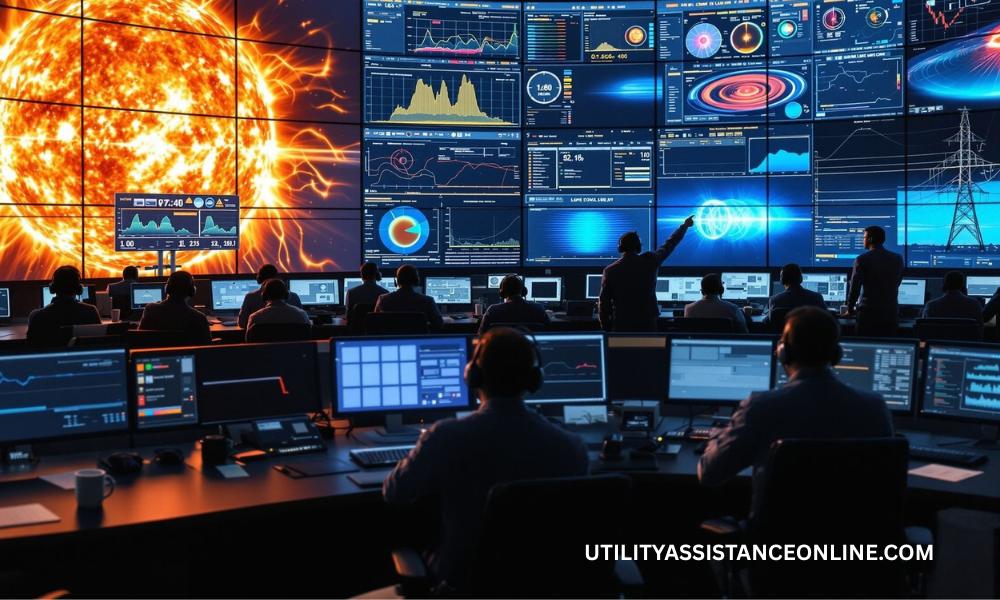What Are Solar Flares and Coronal Mass Ejections (CMEs)?
Solar flares are explosions of electromagnetic radiation caused by the release of magnetic energy on the Sun’s surface. They emit radiation across the spectrum—from radio waves to X-rays and gamma rays—and can reach Earth in about eight minutes.
Coronal Mass Ejections (CMEs), meanwhile, are huge clouds of charged particles and magnetic fields hurled from the Sun’s outer atmosphere. Unlike flares, CMEs travel more slowly—taking one to three days to reach Earth—but they carry immense energy capable of disrupting Earth’s magnetosphere.
Key insight: NASA’s Solar Dynamics Observatory explains that solar flares release electromagnetic energy, while CMEs launch massive clouds of plasma. When those clouds hit Earth, they can spark geomagnetic storms that ripple through the planet’s magnetic field.
Both flares and CMEs follow the Sun’s 11-year solar cycle. We’re now entering the peak of Solar Cycle 25 (2025–2026), meaning higher chances of solar activity—and more vigilance from monitoring agencies like NOAA’s Space Weather Prediction Center and the European Space Agency.
How Solar Flares Affect Earth’s Magnetic Field

When a CME reaches Earth, it interacts with the magnetosphere—the planet’s natural magnetic shield. This collision distorts the magnetosphere, creating geomagnetic storms that can ripple through the upper atmosphere and even into the ground.
The disturbance produces geomagnetically induced currents (GICs)—electric currents that travel through conductive materials like pipelines, railways, and most importantly, power lines. These GICs can overload transformers and cause grid instability.
“When a CME hits Earth’s magnetic field, it’s like shaking a snow globe of electricity across our planet.”
— NOAA Space Weather Scientist
During strong geomagnetic storms, GICs can reach thousands of amperes—enough to heat, saturate, or even destroy key components in high-voltage systems.
How Geomagnetic Storms Can Cause Power Outages
Solar flares themselves don’t directly damage the grid. It’s the induced currents from geomagnetic storms that create the real trouble.
Here’s what typically happens:
- A CME strikes Earth’s magnetic field, causing a major disturbance.
- This generates electric currents that flow through the ground and into transmission lines.
- High-voltage power lines act like antennas, channeling GICs into transformers.
- Transformers overheat or fail, sometimes triggering cascading blackouts.
Case Study: The 1989 Quebec Blackout
On March 13, 1989, a massive solar storm hit North America. Within 90 seconds, Quebec’s power grid collapsed—leaving six million people without power for nine hours. The culprit? GICs that overloaded the Hydro-Québec transformers.
NASA called it a “wake-up call for modern technology.” The same storm also damaged satellites and disrupted radio communications across the continent.
The Carrington Event: The Benchmark for Solar Storms
The Carrington Event of 1859 remains the most powerful solar storm ever recorded. Telegraph systems sparked and caught fire, and auroras lit the sky as far south as the Caribbean.
If a Carrington-level event struck today, experts estimate it could cause trillions in damage, knocking out GPS, satellites, aviation systems, and major portions of the power grid.
How Often Do Solar Flares Cause Power Problems Today?
Thankfully, major outages from solar storms are rare. Modern grids are far more resilient, and most storms are mild. NOAA tracks over 100 geomagnetic disturbances a year, but only a handful reach “strong” or “severe” levels.
| Storm Class (Kp Index) | Impact Level | Potential Effects |
|---|---|---|
| G1 (Minor) | Low | Small power fluctuations, auroras near the poles |
| G3 (Strong) | Moderate | Voltage alarms, satellite drag |
| G5 (Extreme) | Severe | Transformer damage, radio blackouts, grid instability |
Even so, as our world becomes more electrified and interconnected, the risk of cascading effects from moderate storms continues to grow.
Protecting the Power Grid from Solar Flares
The good news: utilities, governments, and scientists are far better prepared than they were in 1989. Here’s how:

1. Space Weather Monitoring and Early Warnings
Satellites like NOAA’s DSCOVR provide real-time solar wind data from one million miles away, giving operators 15–60 minutes of warning before a CME impact.
2. Grid Grounding and Response Systems
Utilities now use grounding systems and automated controls to redirect geomagnetically induced currents safely, preventing transformer overloads.
3. Improved Transformer Design
Research from the Electric Power Research Institute (EPRI) and the U.S. Department of Energy has led to the creation of transformers that resist magnetic saturation and feature neutral blocking devices to limit harmful DC-like currents.
4. Forecasting and Operational Resilience
Utilities can now take precautionary actions when severe space weather is forecast—like reducing loads, rerouting power, or delaying maintenance—to keep systems stable during solar storms.
Could a Future Solar Superstorm Cause a Global Blackout?
Experts agree that a Carrington-level event will happen again—it’s just a matter of when. Statistically, such storms occur every 100–200 years.
If one struck today, potential impacts could include:
- GPS and satellite failures are disrupting navigation and communication
- Undersea cables are conducting harmful currents that disrupt internet connectivity
- Regional grid collapses lasting days or even weeks
However, international collaboration—through groups like the Space Weather Coordination Group (ESA, NASA, NOAA, and others)—has made global infrastructure far more resilient. While a regional blackout is possible, a worldwide one is highly unlikely.
Frequently Asked Questions
Q1: Can solar flares directly damage electronics?
No. Solar flares release radiation, but Earth’s atmosphere blocks most of it. The indirect threat comes from geomagnetically induced currents that can overload systems.
Q2: How long could a solar flare blackout last?
It depends on the storm’s intensity and infrastructure resilience. Minor blackouts might last hours; severe ones could take days or weeks to fix if transformers are destroyed.
Q3: How do scientists predict solar flares?
Agencies like NASA and NOAA use solar observatories to monitor magnetic field changes and sunspots—early indicators of potential flares or CMEs.
Q4: Are we due for another major solar storm?
Possibly. The Sun is approaching the peak of Solar Cycle 25 (2025–2026), when solar activity typically increases. That’s why global monitoring efforts are now in high gear.
Conclusion
Solar flares don’t flip the lights off by themselves—but the geomagnetic storms they unleash can. When those solar bursts hit Earth’s magnetic field, they can create powerful electric currents that stress and sometimes cripple power grids.
Fortunately, modern forecasting, stronger transformer design, and proactive utilities have greatly reduced the risk of a repeat of the 1989 Quebec blackout. Still, as society leans ever more on electricity and satellites, staying informed about solar activity is key to long-term resilience.
Next Steps
Here’s how to stay protected and prepared:
- Follow alerts from NOAA’s Space Weather Prediction Center.
- Support grid modernization and transformer hardening initiatives.
- Use surge protectors for sensitive home electronics.
- Consider backup power options like solar batteries or generators.
- Stay tuned to solar cycle updates—especially as Solar Cycle 25 reaches its peak.
In short, while the Sun can shake our planet’s magnetic field, human ingenuity ensures the lights—and the internet—stay on.
